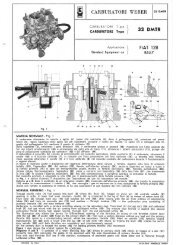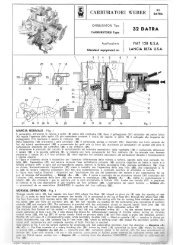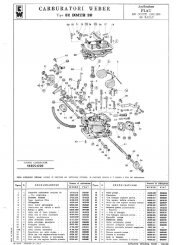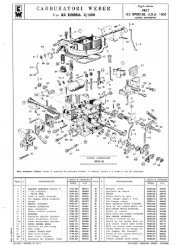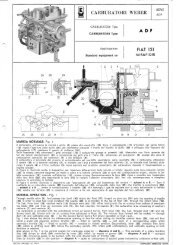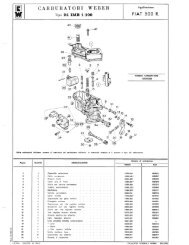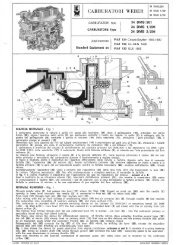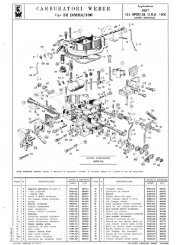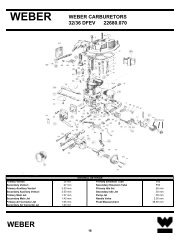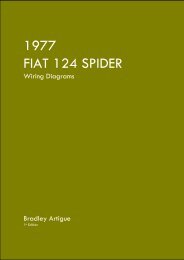Engine Maintenance and Modification Bradley Artigue
FIAT 124 Spider Engine Maintenance + Modification - Artigue.com
FIAT 124 Spider Engine Maintenance + Modification - Artigue.com
- No tags were found...
Create successful ePaper yourself
Turn your PDF publications into a flip-book with our unique Google optimized e-Paper software.
FIAT 124 Spider<br />
<strong>Engine</strong> <strong>Maintenance</strong> + <strong>Modification</strong><br />
2.3 Carburetor<br />
A carburetor is a device that mixes fuel <strong>and</strong> air together for use in an internal combustion<br />
engine. A throttle regulates the amount of airflow into an engine <strong>and</strong> the subsequent<br />
increase in air speed <strong>and</strong> drop in pressure. A restriction in the carburetor barrel, known<br />
as a venturi, forces the air stream to increase in speed as it passes by a number of fueldelivering<br />
orifices. The orifices enrich the stream of air with fuel. The resulting mixture<br />
is a near lambda combination of air <strong>and</strong> fuel.<br />
2.4 Fuel Injection (FI or EFI)<br />
A fuel injection system delivers a metered amount of fuel under high pressure into a<br />
stream of air. Unlike carburetion, fuel injection does not rely on the pumping of the<br />
engine to draw fuel into the air stream. Instead the fuel is forced through a small orifice<br />
(a fuel injector) at very high pressure. The flexibility of fuel injection systems <strong>and</strong><br />
accuracy of fuel delivery leads to increased horsepower, better atomization of fuel,<br />
reduction in emissions, <strong>and</strong> improved fuel economy.<br />
2.5 Compression Ratio (CR)<br />
The compression ratio is used to measure the performance of an internal combustion<br />
engine. The compression ratio is calculated by taking the cylinder bore (diameter), piston<br />
stroke, <strong>and</strong> volume of the combustion chamber prior to ignition. The formula looks like<br />
this:<br />
Where b is cylinder bore diameter, s is the piston stroke length, <strong>and</strong> Vc is the volume of<br />
the combustion chamber. It is important to note that your author inserted this only to<br />
demonstrate use of the pi (π) character <strong>and</strong> because formulas make guides like this one<br />
look more scientific <strong>and</strong> authoritative.<br />
FIAT Spiders had compression ratios that ranged from a low of 7.5:1 (Spider Volumex) to<br />
a high of 9.8:1 (124 Sport Spider 1608). The Volumex relied on a supercharger to<br />
increase the horsepower of the engine; therefore, it is notable that compression ratios<br />
alone are not the sole indication of an engine’s capabilities. Generally speaking, <strong>and</strong><br />
since most of us would not install (<strong>and</strong> could not find) a Volumex supercharger on our<br />
FIAT, mild increases in CR towards the 9.8:1 range result in good performance<br />
increases. CR is typically increased with a piston swap, although other methods<br />
(described later in this guide) will bump it up a point or two.<br />
Pistons are available that will drive the CR of the engines upwards, all the way to 11:1. A<br />
general rule about compression ratios is that the higher the CR the higher octane fuel<br />
7



